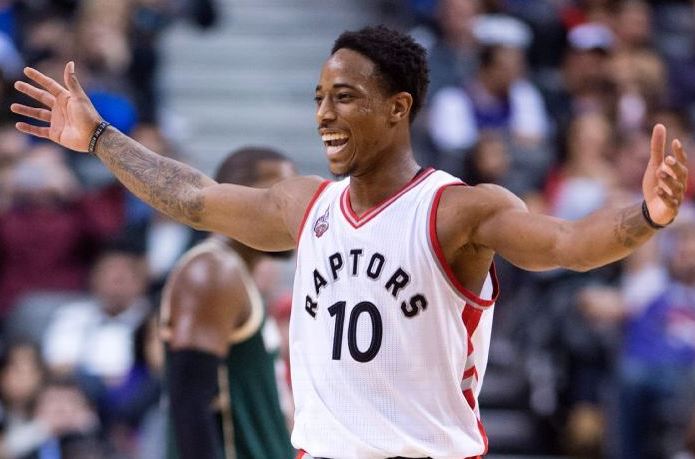Merry Christmas. I always liked saying that even though I don’t technically celebrate it. Happy Holidays or Season’s Greetings, or whatever other diluted derivative never made any sense and bordered on absurd political correctness. It’s quite a nice holiday. People light up their houses, malls look nice, kids are off school, and you get time off to play a ridiculous 6 hours of FIFA a night. As far as holidays go, this one takes the cake. I also like Halloween, which should be made a holiday and I’m totally OK trading Family Day for it.
But this post isn’t about that, it’s about me browsing the NBA stats thinking about DeMar DeRozan game this year, and seeing what’s changed for the better.
This season DeRozan is getting approximately the same percentage of points from the FT line as he did last season. This year he got 31% of his points from the stripe compared to last year’s 30%. Against the Wizards in the playoffs, this number plummeted to 17% as his moves weren’t nearly as effective against a honed in Wizards defense, and the officials swallowed up the whistle, as they’re wont to do in the post-season.
This 13% drop is significant because other “top” shooting guards such as James Harden, Klay Thompson, and Jimmy Butler had their FT rate either go up in the playoffs, or slightly down. The 13% drop for DeRozan was big and it affected the Raptors offense, which went from being near the top towards in the regular season to the bottom in the playoffs. Ideally, you’d like less of DeRozan’s offense to rely on the whistle as the refs change their view of the game come playoff time.
So far this season, DeRozan has improved his frequency of going to the FT line, with his FT rate (number of FTA per FGA) going up from 44% to 49%, with a marginal difference in usage. This has translated to an increase in FTAs from 7.2 to 8.4 per game. Essentially, he’s not settling for the bad shot and drawing fouls at a better rate. Again, whether he’ll be able to do this in the post-season is the real question.
Here’s some good news. Last season 58% of DeRozan’s two-point field goals were unassisted, and this year that number has skyrocketed to 74%. Now, you might be wondering why that is good news since lack of assists is considered a symptom of bad team play. My view here is that DeRozan is generating more of his offense by himself, rather than being set up. If his teammates are taken out of a series (like Kyle Lowry last year), he’s more likely to have success on his own. Of course, the dynamics of basketball is that DeRozan might see more double-teams because of Lowry having a less-than-stellar series, but at least the regular season would have prepared him to handle that situation better.
He’s also taking his shots closer to the rim, most notably he’s reduced the number of long two’s he’s taking in favor of taking more 3-10 footers, which is a much more makeable shot for him, whether a defender is hanging off of him or not. Specifically, he went from 34% of his shots being long-twos last year to to 25% this year. This directly correlates to his increase in 3-10 footers (15% to 23%), a shot he shoots more than 10% higher on!

This 3-10 footer is where my hopes firmly lay. This is the shot that he’s shown he can make with consistency on either side of the court over a defense. Whether it be a post-up, pull-up, or a catch-and-shoot, this is the shot that will define how DeRozan fares as a scorer. Despite not having great quickness, he’s somehow able to writhe his way to this area (the two green spots on either side of the circle in the shot chart above), and get a decent look.
Basically, he’s going isolation a lot more, but at least he’s doing it from an area where he can be more efficient from. That’s been one of the key reasons for DeRozan’s efficiency of late.
Stats provided courtesy of NBA.com and basketball-reference.com. Follow Raptors Republic on Twitter at @raptorsrepublic and on Facebook at fb.com/raptorsrepublic.



